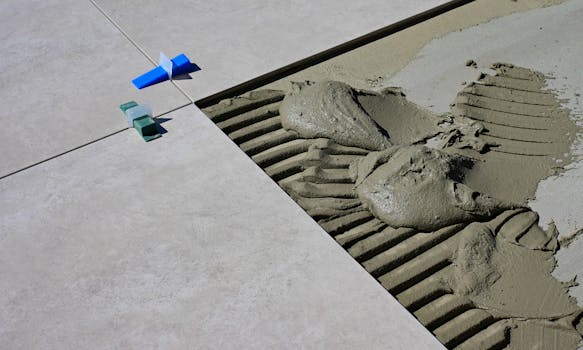Secrets of a Perfect Screed: How to Obtain a Smooth and Durable Surface Over Time
Achieving a perfect screed is essential for any construction project, whether it’s a residential home, commercial building, or industrial facility. A well-executed screed not only provides a smooth surface for flooring but also enhances the durability and longevity of the structure. This article delves into the secrets of creating a flawless screed, offering insights into materials, techniques, and best practices that ensure a durable surface over time.
Understanding Screed: The Basics
Screed is a thin layer of material applied to a floor to create a smooth, level surface. It serves as a base for various flooring types, including tiles, carpets, and hardwood. The primary components of screed include:
- Cement: The binding agent that holds the screed together.
- Sand: Provides bulk and stability.
- Water: Activates the cement and aids in the mixing process.
- Additives: Optional materials that enhance performance, such as plasticizers or accelerators.
Understanding these components is crucial for selecting the right materials for your specific project needs.
Choosing the Right Materials
The quality of materials used in screed significantly impacts the final outcome. Here are some tips for selecting the right materials:
- Use High-Quality Cement: Opt for Portland cement or other high-strength variants to ensure durability.
- Select the Right Sand: Fine sand is preferable for a smoother finish, while coarse sand can be used for thicker applications.
- Consider Additives: Incorporate additives to improve workability, reduce shrinkage, and enhance strength.
For instance, a case study conducted by the National Ready Mixed Concrete Association found that using high-performance concrete additives can increase the compressive strength of screed by up to 30%, leading to longer-lasting surfaces.
Preparation: The Key to Success
Before pouring the screed, proper preparation is essential. This includes:
- Subfloor Assessment: Ensure the subfloor is clean, dry, and free from debris.
- Moisture Testing: Conduct moisture tests to prevent future issues with mold and adhesion.
- Leveling the Base: Use a leveling compound if necessary to create a flat surface.
According to a report by the Concrete Society, improper preparation can lead to a 50% increase in the likelihood of surface defects, emphasizing the importance of this step.
Mixing and Pouring: Techniques for Perfection
The mixing and pouring process is where many projects falter. Here are some techniques to ensure a perfect screed:
- Follow the Right Ratios: Adhere to the recommended mix ratios for cement, sand, and water.
- Use a Mechanical Mixer: This ensures a consistent mix and reduces the risk of human error.
- Pour in Sections: Work in manageable sections to maintain control and prevent premature setting.
For example, a construction firm in London reported that using a mechanical mixer improved their screed quality, resulting in fewer callbacks for repairs and a 20% increase in client satisfaction.
Finishing Touches: Ensuring Longevity
After pouring the screed, finishing touches are crucial for durability:
- Floating: Use a float to smooth the surface and eliminate imperfections.
- Curing: Allow the screed to cure properly by keeping it moist for at least 7 days.
- Sealing: Consider applying a sealant to protect against moisture and wear.
Statistics from the American Concrete Institute indicate that proper curing can increase the strength of concrete by up to 50%, highlighting its importance in the screed process.
Conclusion: The Path to a Perfect Screed
Creating a perfect screed requires careful attention to detail, from selecting high-quality materials to ensuring proper preparation and finishing techniques. By following the secrets outlined in this article, you can achieve a smooth and durable surface that stands the test of time. Remember, the foundation of any successful flooring project lies in the screed, making it essential to invest the necessary time and resources into this critical step.
In summary, focus on:
- Choosing the right materials
- Thorough preparation
- Employing effective mixing and pouring techniques
- Implementing proper finishing and curing methods
By mastering these elements, you can ensure a flawless screed that enhances the overall quality and longevity of your flooring project.
